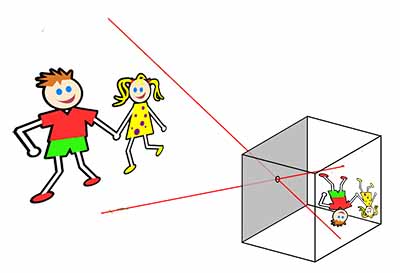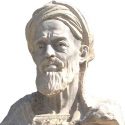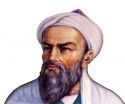 Ibn al-Haytham (Alhazen) is one of the most famous physicists who discovered many laws and theories in physics; especially in optics. His one of the most notable works proves that the human eyes see because of light falling on the eyes. The previous concept was that eyes emit certain radiations which when hit an object, the eye can see it. Due to many contributions to optics, he is recognized as the father of modern optics.
Ibn al-Haytham (Alhazen) is one of the most famous physicists who discovered many laws and theories in physics; especially in optics. His one of the most notable works proves that the human eyes see because of light falling on the eyes. The previous concept was that eyes emit certain radiations which when hit an object, the eye can see it. Due to many contributions to optics, he is recognized as the father of modern optics.
Biography
Ibn al-Haytham, also called Alhazen, belongs to an Arabic family that started to live in Basra (now in Iraq). He was born in 965 CE during the Golden Era of Muslims. He got his education from the teacher of Basra on mathematics, physics, astronomy, and Islamic religion. At an early age, he became very famous due to his expertise in applied mathematics.
Ibn al-Haytham traveled a lot to gain knowledge and visited many cities of the world including Cairo, Egypt. During his stay in Cairo, he held the position among top scholars and taught in the centers of learning. After some time, Ibn al-Haytham claimed that he could regulate the water flow of the River Nile and was invited by the Caliph (head of the Muslim state) to do this job. When he analyzed several designs for water regulation, he found that it was not practical to regulate the Nile. So, he had to flee from the caliph due to strong aggression from him. Ibn al-Haytham had to hide from the caliph until the caliph died, but during that time he also continued his research work.
Ibn al-Haytham wrote many books on optics, astronomy, philosophy, and mathematics. He spent the last years of his life in Cairo, Egypt, where he also wrote a famous book on optics, called Kitab-al-Manazir – which means the Book of Optics. In this book, he discussed the structure of the human eye and how light works. Ibn al-Haytham 1040 CE at the age of 75 years.
Contributions and Discoveries
Ibn Al-Haytham wrote many books on astronomy, physics, and mathematics. Among these books, the most famous book is the Book of Optics. Some of his contributions are:
- Optics:
The Book of Optics that he wrote to discuss the principles and working of light had seven volumes. He researched the working principles of light and wrote about it in the book for ten years. The book was translated into many languages and got huge feedback. In his book, he described how our eye sees and disproved many old concepts of Ptolemy and Euclid. Also, he proved that light travels in straight lines. He described every principle in his book based on experimental observations. - Camera Obscura (Pinhole Camera):

Working of the Pinhole Camera Ibn al-Haytham invented a working model of camera obscura that worked on the principles of light. This camera constructed the projection of objects when light from objects entered the hole of the camera. The entered light then projected the inverted image of the actual object inside the camera. Ibn al-Haytham was also successful in projecting the solar eclipse in his camera.
- Mathematics:
Ibn al-Haytham was also a famous mathematician who provided a link between geometry and algebra. He also developed a mathematical formula for finding the sum of the first 100 numbers of Natural Set. - Scientific Method:
The scientific method is a process of acquiring knowledge, mostly scientific, by carefully observing and experimenting. This method was first developed by Ibn al-Haytham which caused the scientific revolution in Europe in the 17th The scientific method involves getting data from observations, writing a hypothesis, making predictions, and experimenting. - Inertia:
Inertia is a physical property of matter in which an object tends to stay in motion or stay at rest until external force is applied to the object. This idea was discussed by Ibn al-Haytham before Galileo Galilei. - Astronomy:
Ibn al-Haytham made contributions to astronomy during his work on optics. He worked on the Ptolemaic model of the universe, in which Ptolemy explained that Earth is at the center of the universe. Ibn al-Haytham criticized this model and presented a new model in which he improved the motion of celestial bodies.
Facts
- Ibn al-Haytham suggested that the atmosphere of the Earth is not infinite in space but it is only around 40 kilometers high. Today, we know that around 90% of the atmosphere is below the altitude of 10 kilometers; this layer is called the troposphere. He found this fact by studying the light and motion of the sun.
- Ibn al-Haytham wrote around 96 books in various fields, out of which only 55 have survived to this date.
- Political issues brought Ibn al-Haytham before the caliph. He pretended to be a mad person to avoid being punished severely. However, he was ordered to remain under house arrest.






